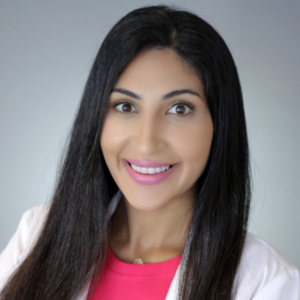It’s common knowledge that children (and adults!) with ADHD often struggle with sleep. In fact, sleep disturbances are one of the earliest signs that a child may go on to receive an ADHD diagnosis later in life. When your child doesn’t sleep well, everything seems to fall apart. When our kids were very young, my husband and I realized how much of a difference sleep made. We became “those people” who would leave a party at 7:30 pm… no matter what. A belated apology to all our friends during that season of life!
Many children with ADHD have difficulty falling asleep, staying asleep, and getting restful sleep. So, parents often wonder, “Is there anything else I can do to support my child in getting a good night’s sleep?”
There are many ways to help with sleep! Let’s talk about one less-known strategy parents can investigate: how their child breathes at night. Many children (with and without ADHD) have sleep-disordered breathing, which can cause them to be chronically sleep deprived. The signs of sleep deprivation and the signs of ADHD can look very similar! This leaves parents asking, “Is it ADHD, a sleep disorder, or both?” Today on the blog, we are talking with Dr. Nora Zaghi, a pediatric dentist specializing in sleep-disordered breathing.
What is sleep-disordered breathing?
Sleep-disordered breathing is a spectrum. A few specific signs parents can look for include:
- Mouth breathing
- Sleeping in odd positions (e.g., arching their back, tipping their head back)
- Noisy breathing
- Gasps, pauses in breathing
- Snoring
- Teeth grinding
What causes sleep-disordered breathing?
There are many causes of sleep-disordered breathing. It’s important to work with a team to identify your child’s sleep disturbance’s root cause. People should breathe through their noses (not mouths) at the most basic anatomy level. When we don’t breathe through our noses consistently, our facial features start to change.
Let’s look at one common example, which is a tongue tie. When a child has a tongue tie, their tongue doesn’t push against the roof of their mouth (the palate), where it should rest. Because the roof of their mouth is also their nasal floor, this can cause the nasal cavity to narrow. Children can develop a deviated septum or other sinus issues as the nasal cavity narrows. Because of this, they begin to breathe through their mouth (instead of their nose). Unfortunately, as children breathe through their mouths, their nasal passages can shrink, and their tonsils often enlarge. Both issues make it harder for them to breathe through their nose at night. Once a tongue tie is fixed, children often develop appropriate nasal breathing.

How do I identify sleep-disordered breathing in my child?
One of the best things parents can do is go into their child’s room over three nights, approximately 90 minutes after falling asleep. Parents can look for the symptoms listed above (e.g., noisy breathing, snoring) and make a note of anything they see or hear. If a child wakes up very tired or agitated, even after a long night of sleep, this can be a sign that they are not getting restful sleep. When children aren’t getting deep sleep (as is often the case with sleep-disordered breathing), they tend to wake up from REM sleep. This puts them into fight-or-flight mode. Remember that quantity does not equal quality for people with sleep-disordered breathing. For instance, a child could sleep for eleven hours but not get quality sleep.
What can I do at home?
Parents can help their children sleep better using these strategies:
- Setting up the environment for a successful night’s sleep
- Feed your child a well-balanced diet; notice the foods you give before bedtime and how your child sleeps
- Nasal hygiene: talk with your child’s doctor about sinus rinses that can help keep the airway clear
Which professionals can help my child with sleep-disordered breathing?
Suppose you have tried at-home solutions but don’t see an improvement. In that case, parents can seek out “airway-focused dentists” or ENTs with specialized training in sleep-disordered breathing, such as the Breathe Institute, which Dr. Nora and her husband founded. It’s important to ask about the dentist’s background so you can find someone with extensive training in sleep-disordered breathing.
Airway-focused dentists look for specific facial, nose, and jaw features, which help them understand how a patient breathes. From there, the dentist can set up a treatment plan. Treatment can range from non-invasive measures such as nasal sprays to a minor procedure to reverse the tongue tie. The goal is to prevent more significant, long-term airway and breathing difficulties.
Once the cause of the breathing issues is identified and resolved, other professionals can be an important part of the child’s team. The child may need oral motor and feeding therapy or other interventions, such as myofunctional therapy, to support their development.
A final message from Dr. Nora:
As parents, we become our child’s personal doctor! As you learn more about your child’s condition, you may need to advocate for your child’s needs. Don’t be discouraged. Work with a team equipped to help you; a team approach is usually needed.

Dr. Nora Zaghi provides functional and integrative oral health care and interceptive orthodontics with a focus on whole-body health and well- being. She is a Diplomate board-certified pediatric dentist, published author, clinical researcher, and educator. She is the director of pediatric dentistry at Breathe Babies and Kids, and provides care in a collaborative environment. Dr. Nora is a graduate of The Breathe Institute’s MyoMasterminds program and has advanced expertise in the field of myofunctional therapy. Beyond her academic studies and clinical experiences, she has continued her education in the fields of sleep, breathing, tongue-tie, early-interceptive orthodontics, oral motor and feeding therapy.
Thank you, Dr. Nora, for sharing your expertise with us!
Have a beautiful week,

Katie, Lori, and Mallory






+ show Comments
- Hide Comments
add a comment